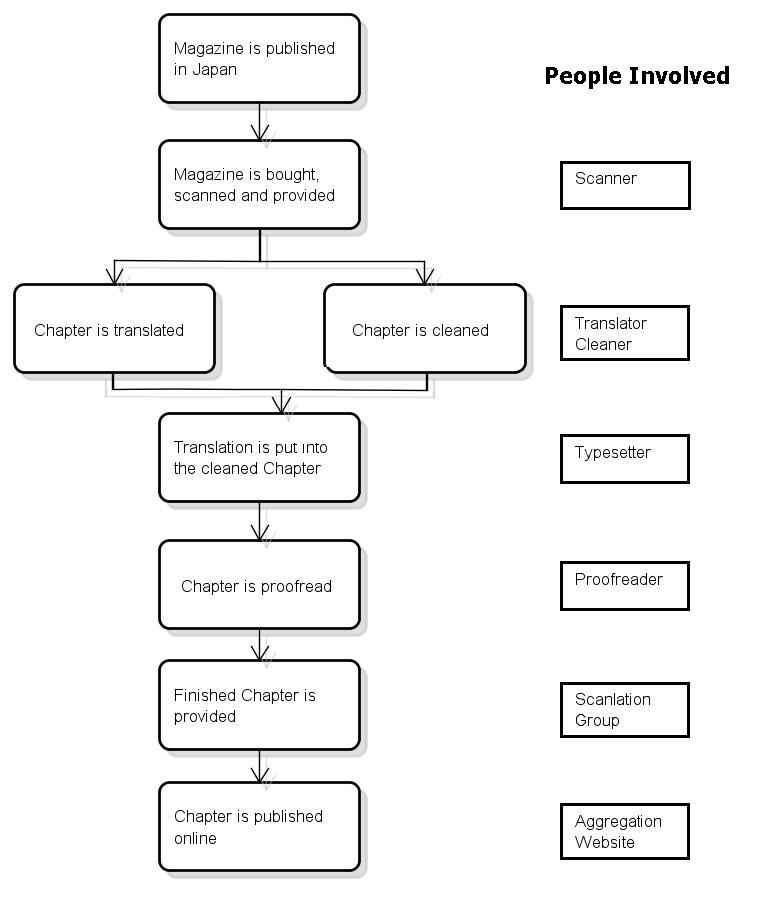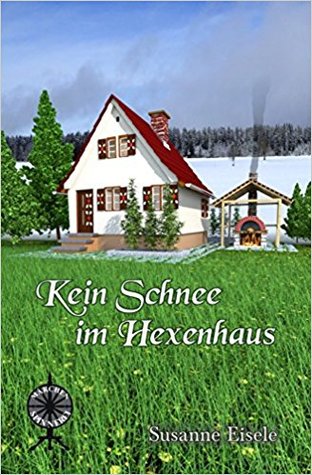What you can read below is the basis of my presentation for an oral English exam.
I couldn’t cover everything in the short time frame we had, but at least you will be able to read the entire composition.
Would have been a waste to just stash it away.
Do you know this guy?
What about him?
Do you have any idea what the general difference between them is?
No?
Well, let me tell you: Thor is a comic, while Nura is a Manga.
And I hope you will be able to tell the difference between them after you read this post.
According to my topic – Manga and Scanlation – I will not just talk about Manga, but also about Scanlations, what they are, how they are made and what is good and bad about them.
But let me begin by looking at the difference between Manga and comics.
As you might know Manga are the Japanes equivalents of Western Comics like Marvel’s Thor for example.
But what exactly is a Manga?
The word itself can be divided into the Japanese phrases Man – aimless or whimsical and Ga – picture or drawing, giving an impression of unplanned continuity as the term is originally used for both comics and cartooning.
Comic in turn is used for both Comic strips (or Cartoons) and Comic books of certain series.
As a result the word Manga mostly stands for Comics originally published in Japan.
An exception for this are „Comics“ that copy the style of the originals, but are from a different country like Germany for example.
Unlike the western versions Manga are not published page- or strip-wise, but as chapters.
Varying from series to series they are published in anthology magazines in a weekly, monthly or random rhythm – which I’ll return to later on – and in lower frequencies as volumes of collected chapters.
Prejudices and Genres
The most common prejudice regarding Manga is that every character has huge eyes and cute looks.
While this might have been the case with the first series that swapped over the ocean in the 1970s/1980s, it is no longer. Or at least only characters that are intended to be the cute ones (especially children and/or young girls) have this features.
Nowadays character designs have more harsh lines and look rather realistic, yet not as abstract as a western Character like Thor does.
The stories itself range in the same genres as their western counterparts.
You can find pretty much everything from mere Romance over Action up to pure Fantasy or SciFi.
This again is diverted into Manga for females (Shoujo) or males (Shounen) and those in turn into different age groups (children, young adults, adults).
But the way it is portrayed differs from the majority of Comics.
While having a tendency to using comic relief characters and scenes, they always have a serious narration.
Even Manga for children have certain morales within them, while wrapped in light-hearted stories suitable for the reader’s age.
Regardless of genre or anticipated reader-base Manga always teach you something about the culture and/or history of Japan.
For example the rather new series called „Nurarihyon No Mago“ (literally: „Nurarihyon’s Grandson“, translated: „Nura: Rise of the Yokai Clan“/“Nura – Herr der Yokai“).
Like several other series this one centers around a young boy, Rikuo, who has a rather unusual heritage. He is the grandson of the leader of all Youkai (Japanese monsters from folklore) and Rikuo as quarter Youkai not only has to take over his grandfather’s position, but also has to cope with being human for the majority of the day and Youkai at night.
And while doing that you also learn about the different types of Youkai that are believed to exist on the Japanese isles.
Additionally, it criticizes the thoughts of excluding someone because he/she is different, which is one of the main topics of a lot of Manga.
In short: Manga are Japanese Comicbooks with a variety of genres for all ages.
Manga vs. Graphic Novel
Though some people – retailers even – claim Manga to be „Graphic Novels„, which by the common usage of the term is quite incorrect.
As I said at the beginning: Thor is a Comic.
It is full of colour pages, has either a concluded or ongoing plot and is read from front to back and from left to right.
This, can be considered Graphic Novel.
It also consists (mostly) of colour pages and is read the same way, but is sturdier than the Comic and potentially also contains short narrative texts.
And Nura thus is still a Manga.
It has usually black and white pages, occasionally colour pages and most importantly is read from back to front and from right to left.
And while Comics and Graphic Novels have glossy paper Manga usually have sturdy, yet still more paper like pages.
But regardless of those differences, let me digress a moment into the Japanese Manga market itself.
Contrary to the way Manga are usually published in Western countries (almost) everything in Japan starts with an anthology magazine.
Within each magazine – as the name would suggest – you have the newest chapter of several different Manga series.
Furthermore, these series are collected according to their topic and the magazines theme.
For example the most famous magazine – the Weekly Shounen Jump – only contains Manga series primarily aimed at boys (Shounen) with lots of action, fights and comedy.
Series which are published in one of the Jump magazines (Shounen, Monthly, V Jump for example) are most likely to become bestsellers, simply because these magazines attract a lot of people ranging from the youngsters up to adults who have bought these magazines in their youth.
You can imagine a magazine like this: The Weekly Shounen Jump for example has currently about 21 series. Every week the creator of the respective Manga writes, draws and simply finishes a new chapter of about twenty pages – with the help of his/her assistants.
The German and the American Manga publishers tried to adept this concept, but failed in both cases as the Western audience seems to prefer the collected Volumes instead of buying the anthologies and then buying the volume versions as well.
The American version „Shonen Jump“ was based on the Weekly Shounen Jump, but modified for an American audience including information on Japan itself and other gimmicks.
It lasted from 2002 until winter 2011.
The German versions BANZAI! for boys and Daisuki for girls had a similar demise. While BANZAI! only lasted from November 2001 to December 2005, due to a discontinued license for the published series, Daisuki managed to stay in business from February 2003 until June this year (2012), when the sales became too low the be bearable any more.
Two to three months after a Chapter is published in the magazines the original chapters are collected into a volume per series; the so called Tankoubon.
When this is released the official translators begin their work, causing a gap between the original and the translated versions (i.e. the series „One Piece„: current Japanese chapter: 685; current Japanese volume: 67 – until chapter 667; current German volume: 63 – until chapter 626) that the Scanlators wish to fill.
Therefore the Japanese magazines provide the basis needed for Scanlations.
But what is a Scanlation?
The word „Scanlation“ is a portmanteau of the words scan and translation. This way the meaning of the word lies within the word itself.
Basically a Scanlation is the process of scanning, editing and translating Manga/Comics from their original language into the translator’s language.
In most cases this is done by non-professionals, by fans who just want to provide a certain series for other fans/readers.
But before Scanlations had been even thought of there were the so called „FanSubs“, which provided fan-made subtitles for Anime (Japanese Cartoons) that aired at that time.
In the late 70s to early 80s fans started to send tapes with the translations from fan-group to fan-group, to share their work.
Coming from there people started to buy the Japanese magazines and/or Manga as well.
They bought the original and put a translation note inside it and send it off to whoever wanted to read it as well.
It was a small community at first, but „thanks“ to the Internet the whole process evolved.
People started to scan the pages, but still only enclosed the translation until the point when some of them started to include them in the scanned pages.
The Scanlation process
From that time on many Scanlation groups went by a simply yet effective process that can be seen in the following chart:

The Process of Scanlating a Manga chapter
What you also can see is that in each stage there are different people involved.
But it all starts with someone buying the magazines I mentioned before.
This magazine is then dismantled into single pages – either by cutting the spine of the book with a razor blade or putting it in a microwave causing the glue to melt.
The scanned pages are now called „Raw“s and are put online via different file sharing systems or send directly to the Translator and/or Cleaner.
This position can be hold by the same or different persons.
The work of a translator is what the name suggests, he/she translates everything in the chapter from sound effects, over thought- and speech-bubbles, to author’s comments, as close to the original meaning as possible.
The work of a Cleaner is a little less clear, it consist of cleaning up the scanned images (removing spots that shouldn’t be there as well as removing the original texts), converting them to black-and-white and adjusting the brightness and contrast levels until they look like the versions you see in published volumes – the scanned pages usually have a more grey colour instead of plain black and white.
When both the translation and the cleaning are done the Typesetter uses both things and puts them together.
Depending on how fast a Scanlation group wants their work to be published the finished chapter has to go through a Proofreader, who checks if everything is done correctly. Afterwards the result is right away posted online or send off to Aggregation websites, who basically are libraries for all the different series. With this the newly released Japanese chapter is scanlated and shortly afterwards available for the foreign audience.
Summarizing this into a few words: Scanlations are fan-made scans and translations of (mostly) Japanese Manga that are published online and (usually) available for everyone.
Yet scanlating and distributing any series is illegal.
Reasoning against Scanlations
I’d like to give you some of the reasoning of the publishers and retailers and show you why they are not that valid.
Demand and Prices
The main reason for publishers and retailers to claim that Scanlations are evil is that they ruin the sales. When people have a free version the companies do not see a reason why they should buy the official version.
But that is not really the case.
A lot of fans still buy the volumes and the merchandise accompanying them.
Of course there are still those who only read and not buy it, but the overall tenor in Germany is still positive.
Even though the sales for the anthologies I mentioned earlier dropped that far that their cancellation was necessary, the sales for Manga were and are still increasing.
It is a bit different in America though, where you can see the negative effect on the demand-supply curve.
The demand is still there and increasing, yet not that many people are willing to buy the volumes at their current price, still their non-buying causes the publishers to increase the prices again, so they will be able to cover their costs, which again leads to less people buying it and so forth.
But with the current prices it really is not that surprising that people stop buying the printed versions.
An average Volume in Germany costs around 7 Euro, while the American versions are around 10 Dollars, which adds up to quite a fortune with each bought series.
Besides it is quite a temptation if you have to pay for this when you could have this for free and just some days after the official release.
Manga fans want to stay up to date with their favourite series, explore new ones and simply want to try out things. Scanlations grand people access to these things without having to pay for them.
This gives people a chance to read them, not just when they are short on money, but also if they simply want to try it and are afraid to make a misinvestment.
This way of thinking is similar to what people think of libraries.
If you wish to try a book without having to buy it you go to your local library and take it from there.
The Aggregation websites I mentioned earlier are nothing different.
Like in every other scene as well: Those who want to buy them will buy them – regardless of the price.
Besides, not wanting to buy the Tankoubon volumes doesn’t mean a fan isn’t willing to buy other merchandise or special features, such as plush toys, figurines, special volumes, artbooks, novels and so forth.
Yet theses things are rarely sold in your local bookstores.
Though you might have the chance to buy them in a well-equipped Comic store it still is very unlikely.
The best chance fans have to buy additional stuff is by using the Internet or attending Conventions.
Just a small excursion on this before I continue with the next problem:
Conventions or Anime Conventions are meetings for fans from fans and/or supported by studios or publishers. For several days fans can indulge in their fandom: Buying the stuff I mentioned before, attending discussion panels, participating in workshops, while dressing up as their favourite Characters – called Cosplay. (There are all kind of other Conventions as well, but covering those does not serve the purpose here.)
Wrongful profit
The next problem with Scanlation is that some of the Aggregation websites try to make a profit of their work, by forcing readers to log in and pay a monthly fee (like libraries) to read (and/or download) as much Manga as they wish or simply gaining money from advertisement on their sides.
But this is in my opinion an even worse Copyright Infringement than hosting the Scanlations in the first place as the authors (and other people involved) don’t see a cent of this money (as they’d to through library fees).
In 2010 36 Japanese publishers and American publishers like VizMedia, TokyoPop and Yen Press formed a coalition to fight the “rampant and growing” problem of Scanlation.
They tried to force these sides into closing.
Though only the three biggest Aggregation websites at that time – OneManga, MangaHelper and MangaFox – are remembered to have closed their doors because of this.
Still from their ashes several other websites like MangaStream or MangaReader rose to popularity, as the readers looked for a substitution.
Afterwards not that much has been publicly heard of similar actions.
For a short period of time MangaStream had put down its releases of the Weekly Shounen Jump series due to VizMedia starting a new campaign, claiming that they will only host reviews and release notes for the chapters.
Only a few weeks later they started to publish the series again by saying, that they will be removed after 60 hours.
By now they stay longer in their directory but less than the amount of time on other sides where you can read them years after they were published.
Declining sales?
While it is good that the publishers and creators wish to protect their rights this might not been the best way to try this.
It is the same principle as with the movie or music industry.
Publishing without permission is forbidden, yet it is still practised – regardless of the consequences.

The Sales of the Weekly Shounen Jump magazine
In Addition to that did the sales of the anthology magazines in the Japanese Manga market decline in the recent years.
It is still higher compared to those in the western market; yet lower than their own former sales.
From 1995 to 2005 the sales of the Weekly Shounen Jump magazine halved, only having a slight increase again in 2005.
I would have liked to explore more on this graph, but the data it contains is slightly biased as it sometimes shows the circulation of New-Years‘ issue, the average circulation or the bestselling issue, but it gives a good overview over the situation.
Therefore I’d like to show you this graph here with the First Week Sales of the Manga series Bleach for its last ten volumes.
As the sales are cumulated from the day of their release until the Sunday of that week it is not always the same amount of days a volume has been available.

Bleach Sales per Volume in the first three days
For better comparison I calculated the amount of sold volumes for three days, as this was the number of days the most volumes had been published.
Seeing these sales figures would suggest a decline, but it is not as simple as that.
The story of a series is just as important as the overall popularity of it.
For example volume 48, which is the peak here, is the ending of the first major plot arc in the entire series, so everyone wanted to have it.
Volumes 49 to 54 are an interlude arc for the main character to regain the powers he had lost in the previous arc.
With 50 and 51 being the ones with the most progress and 53 being the one with the return of much anticipated side characters.
And even though it is the final arc the sales for volume 55 are still lower than those of the previous arc.
When this volume was released in June 2012 the story had just begun and it wasn’t clear where it would lead, so people might have wanted to look at what will happen before they bought the volume, besides they probably were still disappointed at the interlude arc, which wasn’t that good.
Looking at the complete sales figures this volume would have been the second bestselling one beside volume 46.
My prediction for volume 57 is that the sales will rise again, as the story this time is pretty cool.
You see a decrease in sales in this field is not only because of general reasons like lack of money or interest, it also depends on what the volume contains that the buyer wishes to read over and over again.
Regarding Scanlations this can be done on the Aggregation websites as well, but it is always a different feeling if you hold the volume in your hands and turn page by page than simply clicking a button on your keyboard to do the same.
But not everything is bad with Scanlations
Thanks to Scanlations a lot of series made their way into peoples mind.
Scanlation groups came across series they would enjoy reading and translating, thus creating a fan base for series that none of the official publishers would have thought of.
And this effect can be seen in both the German and the American market.
For example the series Ao No Exorcist (Blue Exorcist), which is a huge success in Japan, had its first Cosplayers long before it was even licensed in Germany.
The new(!) German publisher „Kazé“ then took it into their repertoire to give in to their needs.
As well as the series „Maid-Sama„.
If I remember correctly some girls suggested this series to be published when representatives of „CarlsenComics“ and „TokyoPop“ held a panel at the Hina Matsuri – a Japanese cultural feast in Hamburg.
And what happens if publishers do not comply to their readers wishes can be seen by the American branch of TokyoPop, which had to close because they diverted that much from their main aspect – selling Manga – that they weren’t able to uphold their business.
Another reason for fans to prefer the Scanlations is that these translators put more heart into their work, they translate what is said – unlike some publishers who translate what they wish it to say – and try to keep it as close to the original as possible, even including some of the Japanese words.
Official translators try to translate everything, only recently did they start to include words like „-sama„, „-san„, etc. simply because they noticed the audience know these words and a formal translation wouldn’t work.
Though you feel kind of stupid when you read the translators note still in the 50th volume as if you still don’t know what it means.
Often the official translators change the names to become such the western audience are more familiar with or translating it with the wrong pronunciation – especially with names that contain an „R“ – (Luffy -> Ruffy – One Piece).
Sometimes they try to include the pun intended with the name to be in the translated version as well (Usopp -> Lysop – One Piece).
Scanlation translators simply leave the names as they are and do the same with catchphrases and speeches.
They look at the tone of the conversation and translate it that way, while the professionals create a rather unemotional translation.
This, beside the fast and free availability, is one of the reasons readers tend to use Scanlations.
Anyway, to summarize this:
Publishers do not like Scanlations and try/tried to stop them, yet at the same time they use them to gauge peoples interest in certain series to see whether or not it would be profitable to sell them.
Yet with the prices they are selling them for, they consequently force their readers to look for alternatives, thus supporting the Scanlation market – if you want to call it that way.
With the current way of thinking and the lack of money within the reader’s hands it is most likely that Scanlations might exceed the printed volumes, thus causing the downfall of the print media.
Yet there still will be people who wish to buy these things – either to collect them or simply to read them as book.
If both Scanlation groups/Aggregation websites and publisher would find a compromise for their readers that would be affordable and have at least the same standards the Scanlations already provide they would be able to stop this conflict.
But let’s recap what I told you today:
I talked about Manga and how to distinguish them from Comics and Graphic Novels.
Then I talked about Scanlations and the process of making them.
Additionally, I explored a bit on how Manga are generally published in Japan.
At the end I looked at the pros and cons of Scanlations, leaving you with the thought that both parties – publisher and scanlators/readers – have to change their minds on this „problem“, so they might be able to solve it.
And I hope you can now look through the links above and are able to tell the difference between Comics, Graphic Novels, Manga and Scanlations.
References:
Other interesting things to read:
© I own none of the above mentioned Comics or Manga, though I do own issues of them, but no Copyright at all. They all belong to their respective creators. The pictures provided here, were simply used for visualization.
The Chart for the Jump Sales was taken from „The Rise and Fall of Jump„, as well as the data for the Scanlation process chart and the Bleach volume Sales were taken from „Scanlators tell their Stories“ and „Bleach Volume Sales„.
No Copyright Infringement is intended by any of this.
If you would like to use my graphs (Scanlation Process and Bleach Sales) or any of my conclusions please send me a note as I’d like to know how you interpret (and use) them.







